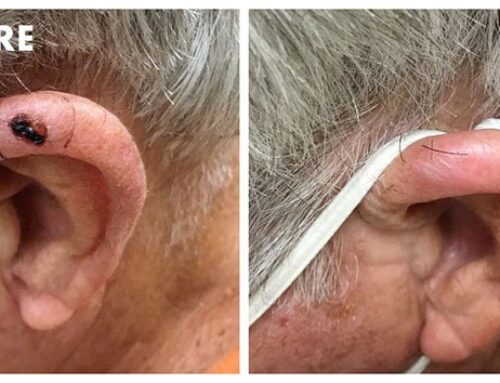Summary
Alopecia areata is an autoimmune form of hair loss that can start as small bald patches and, in some cases, progress to loss of all scalp or body hair. Dermatologists commonly treat it with steroid injections or potent topicals. Since June 2022, the oral JAK-inhibitor Olumiant has been FDA-approved for severe cases.
What is Alopecia Areata?
Alopecia areata is an autoimmune disorder where your body’s immune system mistakenly attacks its own hair follicles, causing hair loss. Unlike other types of hair loss, this condition requires medical, not just cosmetic, care.
Who it affects: People of any age, from infants to elderly adults can develop this condition.
How common is it: Very common, hair-loss specialists treat patients with alopecia areata every single day.
Why understanding matters: Recognizing that it’s autoimmune helps you understand why you need proper medical treatment, not just over-the-counter solutions.
What Does Alopecia Areata Look Like at First?
The typical appearance includes small, completely hairless patches on your scalp. These patches are smooth to the touch and have distinct, well-defined borders.
Key characteristics of Alopecia Areata :
- Perfectly round or oval bald spots
- Completely smooth skin with no broken hairs
- Clear boundaries between normal hair and bald areas
- Usually starts with just one or two small patches
Why early recognition matters: The sooner you identify these signs, the faster you can get effective treatment. Dermatologists often achieve better results when treatment starts early.
Can Alopecia Areata Lead to Total Hair Loss?
Yes, but progression varies greatly from person to person. What starts as small patches can sometimes spread, and in certain cases, all hair on the scalp, or even all body hair, can be lost.
Possible progression levels:
- Mild: Small patches that stay localized
- Moderate: Patches that gradually enlarge or multiply
- Severe: Complete scalp hair loss (alopecia totalis)
- Most severe: Loss of all body hair (alopecia universalis)
Important to remember: Not everyone experiences complete hair loss. Many people have only limited patches that respond well to treatment. This is why individualized medical oversight is so important, your doctor can monitor changes and adjust treatment accordingly.
What Treatments Do Dermatologists Use First?
Steroid injections are often the first-line treatment, and they can be remarkably effective. Many patients have experienced complete hair regrowth after this treatment.
How steroid injections work:
- Injected directly into the affected patches
- Help suppress the immune system’s attack on hair follicles
- Results can include regrowth of entire heads of hair
- Timeline for results varies by individual
Alternative first-line treatment: Powerful topical steroid medications applied directly to bald patches. These aim for the same hair regrowth results as injections but in cream or ointment form.
Next steps: Your dermatologist will discuss all options and potential risks with you in clinic. Your specific treatment plan depends on the severity of your condition and how well you respond to initial treatments.
What is Olumiant?
Olumiant made history in June 2022 as the first FDA-approved medication specifically designed for severe alopecia areata. It’s an oral pill that belongs to a class of drugs called JAK inhibitors.
How Olumiant works:
- Taken by mouth as a daily pill
- Blocks certain immune system pathways (JAK inhibitors)
- While the exact mechanism isn’t fully understood, results can be dramatic
- Reserved for severe cases where other treatments haven’t worked
What makes it significant: Before Olumiant, there was no FDA-approved medication specifically for alopecia areata. This represents a major breakthrough for people with severe cases.
Important considerations: Like any systemic medication, Olumiant has potential side effects that need careful discussion with your dermatologist. Regular monitoring is essential.
Who Should Manage Your Care?
You need a dermatologist with specific expertise in hair-loss management. This isn’t a condition to handle on your own or with general skincare advice.
What a qualified specialist will do:
- Walk you through all available treatment options
- Carefully balance potential benefits against possible side effects
- Monitor your progress throughout treatment
- Adjust your treatment plan based on how you respond
- Set realistic expectations while maintaining hope
Why specialist care matters: Dermatologists who treat hair loss regularly have the experience to make the best decisions for your specific situation. They understand which treatments work best for different types and severities of alopecia areata.
How Do I Get Started with Alopecia Areata Treatment?
Getting started with alopecia areata treatment begins with a consultation where your dermatologist will assess your scalp condition, hair loss pattern, and candidacy for various treatment options. Together, you’ll develop a personalized treatment plan that aligns with your goals and lifestyle while setting realistic expectations for results.
At Haber Dermatology, Dr. Robert Haber specializes in comprehensive hair loss solutions, including advanced alopecia areata treatments. To schedule your consultation and learn if these treatments are right for you, visit haberderm.com or call for an appointment.

Meet Robert Haber, MD, FISHRS
Dr. Haber is considered one of the finest hair transplant surgeons in the world, and lectures internationally each year. He also directs the region’s busiest private clinical trials unit studying new medications.
In 2023, Dr. Haber was the recipient of the prestigious Manfred Lucas Lifetime Achievement Award by the ISHRS, for his exceptional contributions and commitment to the field of hair transplantation. Only 15 other surgeons globally have ever received this honor.
The International Society of Hair Restoration Surgery (ISHRS) awarded Dr. Haber the coveted Golden Follicle Award in 2009 as one of the world’s top hair transplant surgeons, in recognition of his academic contributions and surgical skills.

![Scalp Micropigmentation (SMP): Non-Surgical Hair Loss Solutions [2025]](https://haberderm.com/wp-content/uploads/2025/09/SMP2-800x1198-side-by-side-500x383.jpg)
